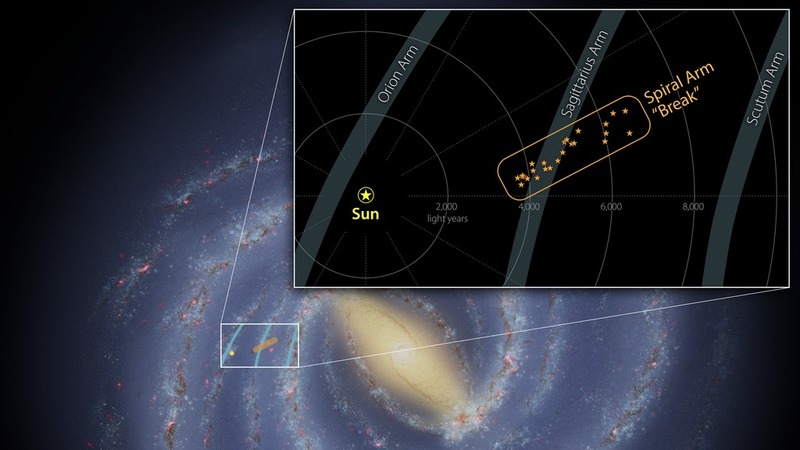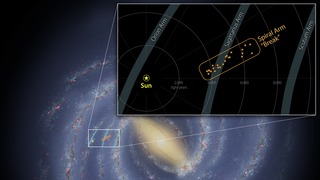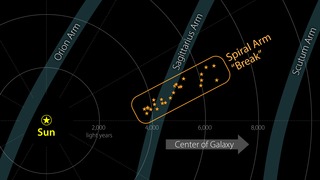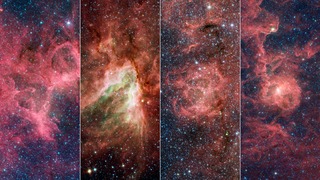
Credit: NASA/JPL-Caltech/R. Hurt (IPAC)
Artwork • August 17th, 2021 • ssc2021-07a
ssc2021-07a
A contingent of young stars and star-forming gas clouds is sticking out of one of the Milky Way's spiral arms like a splinter protruding from a plank of wood. Stretching some 3,000 light-years, this is the first major structure identified with such a dramatically different orientation relative to the arm.
The background image shows the location of the splinter in the Milky Way. The yellow region in the center of the image is the galaxy's bright and crowded center. The galaxy's arms spiral around the center, and are full of stars and star-forming clouds of gas and dust.
The inset (Figure 1) provides a closer view of the structure, as well as its size and distance from the Sun. The nearby spiral arms are also noted. The star shapes indicate a star-forming region that may contain anywhere from dozens to thousands of stars. (Among these are the Eagle Nebula, the Omega Nebula, the Trifid Nebula, and the Lagoon Nebula). These stars and star-forming regions are moving through space together, at roughly the same speed and in the same direction.
A key property of spiral arms is how tightly they wind around a galaxy. This characteristic is measured by the arm's pitch angle. A circle has a pitch angle of 0 degrees; as the spiral becomes more open, the pitch angle increases. Most models of the Milky Way suggest that the Sagittarius Arm forms a spiral that has a pitch angle of about 12 degrees, but the protruding structure has a pitch angle of nearly 60 degrees.
Similar structures – sometimes called spurs or feathers – are commonly found jutting out of the arms of other spiral galaxies. For decades scientists have wondered whether our Milky Way's spiral arms are also dotted with these structures or if they are relatively smooth.
About the Object
- Name
- Milky Way
- Type
- Galaxy > Type > Spiral







